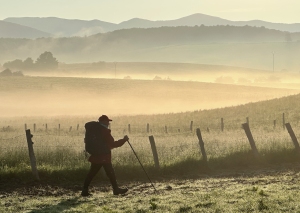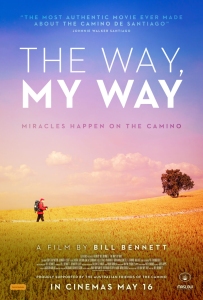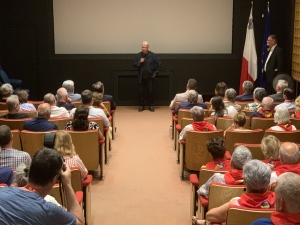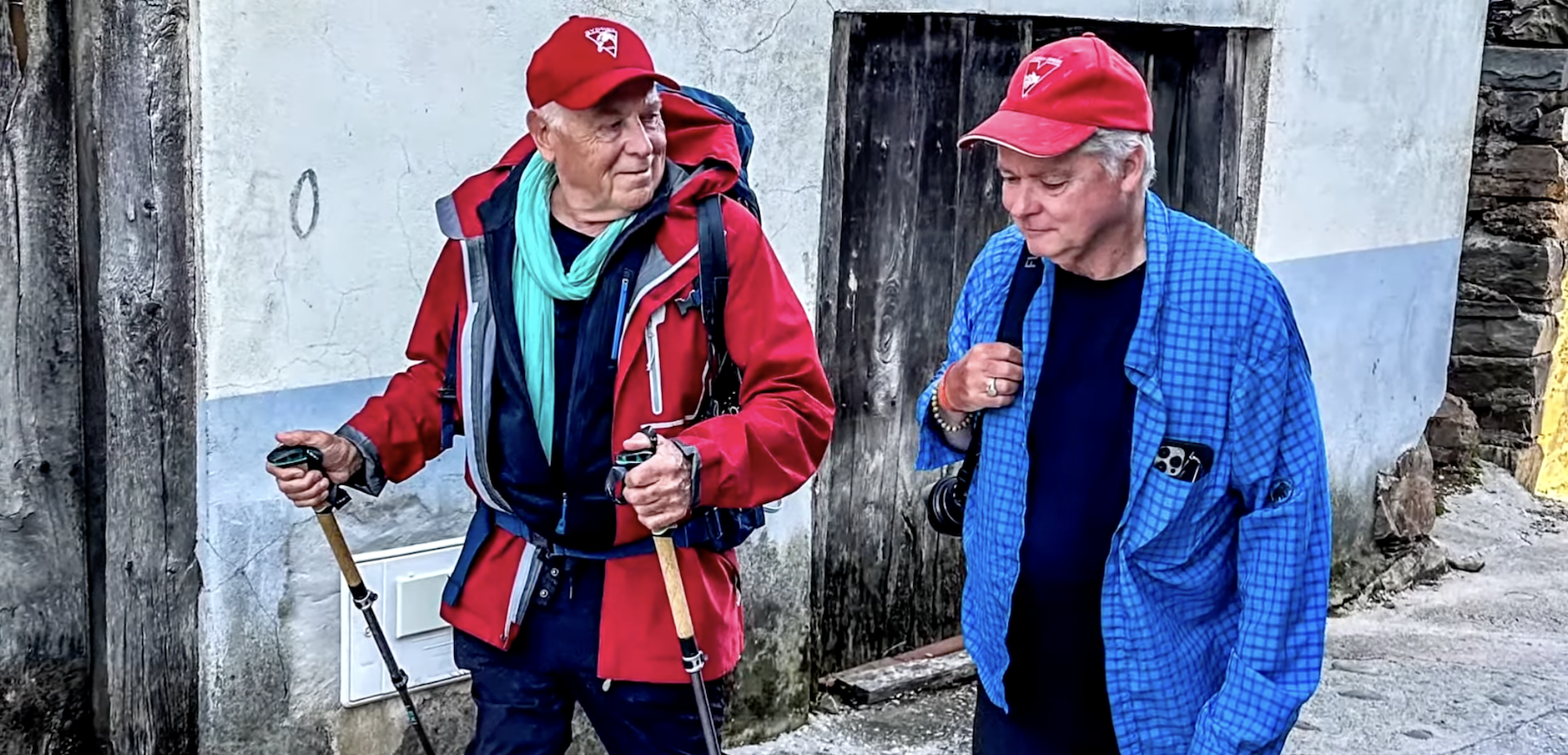On 24 May 2025, in the historic core of Valletta, Malta, the European premiere of The Way – My Way marked a distinctive moment during the General Assembly of Camino Europa Compostela. Introduced to an international audience of walkers, scholars, diplomats, and members of Jacobean associations, the film delivered a restrained yet evocative depiction of the Camino de Santiago. Directed by veteran Australian filmmaker Bill Bennett, the film moved many for its candidness, sensitivity, and stylistic austerity.
Unlike most Camino-related features, The Way – My Way does not present a touristic showcase or a dramatized plotline. There are no sweeping montages of famed landmarks or theatrical climaxes. Instead, Bennett offers a film steeped in introspection, fatigue, silence, and a transformation that is rarely verbalized yet constantly felt.

A Journey Without Ornament
Based on Bennett’s book of the same name, written following his 2013 pilgrimage, the film retraces his 800-kilometre route from Saint-Jean-Pied-de-Port to Santiago de Compostela. A decade later, he returned to walk the same path and capture it on film. The resulting cinematic journey is literal and emotional—devoid of embellishment, faithful to the geography, and grounded in the everyday texture of the Camino.
Actor Chris Haywood plays the role of Bennett with measured restraint. His hesitant gait and prolonged silences convey far more than any scripted dialogue. The film becomes a visual meditation on the act of walking and the internal processes it sets in motion.
A Filmmaker on the Path
Bennett is best known for his work across narrative film and documentary. His films have been honoured by the Australian Film Institute and featured in festivals such as Cannes, Toronto, and Mumbai. Yet The Way – My Way did not originate as a professional project. When Bennett first walked the Camino, he did so without clear motivation—he was not a hiker, nor affiliated with religious institutions. “I didn’t know why I was walking,” he later reflected.
After completing the route, he wrote a book in an effort to understand the experience. Self-published, it found an unexpected resonance with readers who saw their own hopes, memories, or future aspirations mirrored in its pages. That reception eventually led Bennett to consider a film adaptation, though not without resistance. Initial offers from studios did not align with his vision. Ultimately, convinced that no one else could tell this story as it happened, he decided to direct it himself.
 A Conscious Minimalism
A Conscious Minimalism
Filmed in 2023 with a small crew, the production embraced a pared-down approach. Bennett’s wife, Jennifer Cluff—a producer, actress, and fellow pilgrim—contributed both behind the camera and on screen. Of the twenty characters with speaking roles, only four were played by professional actors. The others were real pilgrims, several of whom had walked with Bennett in 2013.
This inclusion added to the film’s authenticity. Notable among them is Johnnie Walker Santiago, a well-known figure in the Camino community, whose appearance in the film was warmly received at the Malta premiere. Also featured are Italians Giovanna Donzelli and Iván Boffi, who appear as themselves.
The script evolved through more than forty drafts over seven years, seeking the right tone. The musical score by Jackson Milas, paired with Dan Mullins’ Camino anthem “Somewhere Along the Way,” supports the narrative subtly, without overt sentimentality.
A Deliberate Omission of Iconic Sites
One of the film’s more unconventional choices was the exclusion of widely recognized Camino landmarks, such as Cruz de Ferro or Puente la Reina. In the post-screening discussion, Bennett explained this as a conscious decision: “I’m not making a documentary. I wanted to preserve the mystery of these places for future pilgrims.” His aim was to portray the interior journey, leaving space for viewers to project their own imaginations and memories.
This choice was well received by those who value the Camino’s personal dimensions over its touristic ones. For these viewers, the film offered a space of reflection—a mirror rather than a map.

Emotional Reception in Valletta
Hosted by the Maltese association XirCammini at the Din l-Art Ħelwa Foundation, the European premiere drew diplomats, including Spain’s ambassador to Malta and Australia’s high commissioner. Both remarked on the Camino’s continuing role as a cultural bridge between continents.
Yet it was the audience’s response that defined the evening. For nearly two hours, the venue remained in attentive silence. After the screening, attendees—among them seasoned pilgrims and leaders of Camino associations—spoke of the film’s rare ability to evoke the true emotional and physical weight of walking to Santiago.
One scene, in which a Korean pilgrim jokingly suggests taking a selfie with the protagonist, struck a chord. The exchange—simple, humorous, and fleeting—captured the Camino’s diverse intersections of culture, age, and motivation with grace and humanity.
An Unclassifiable Film Finding Its Place

Despite its resonance, The Way – My Way defies traditional film categorization. It is neither a documentary nor a conventional narrative feature, which poses challenges for mainstream distribution. Still, it is gaining traction through community screenings and word of mouth. Jacobean associations, hostels, and independent festivals in Germany, Italy, and the United States are organizing events around the film. It was also featured at the Marché du Film during the 2024 Cannes Film Festival.
This grassroots momentum underscores the paradox at the film’s core: a modest, introspective project achieving what many larger productions fail to do—connect deeply with its audience.
A Modest, Resonant Work
In a media environment driven by spectacle and pace, The Way – My Way presents an alternative. On the surface, little seems to happen. But for those who have walked—or who long to walk—this very absence is the point: a blister, a shared silence, an unexpected tear.
Bennett’s film doesn’t offer lessons or resolutions. It offers space—space to feel, to remember, to question. And above all, to walk.
Rather than illustrating the Camino de Santiago, The Way – My Way invites the viewer to experience its essence. Its creative honesty may well be the reason why those who have completed the Camino do not just recommend it—they express gratitude for it.





